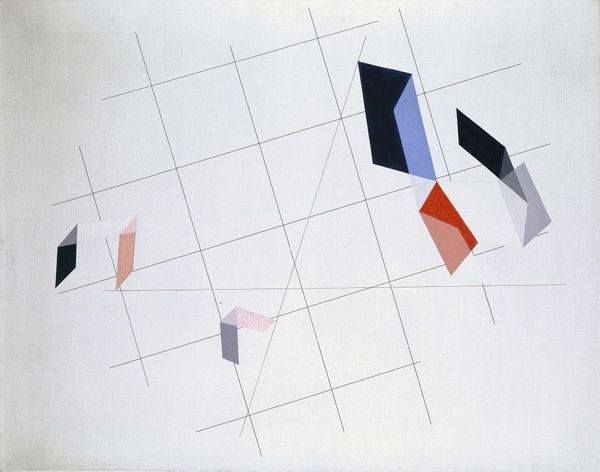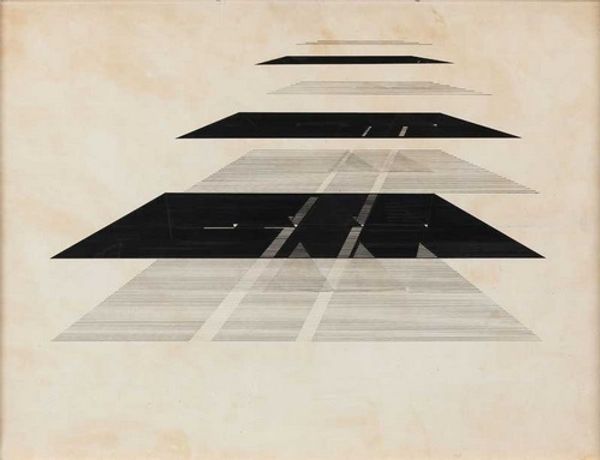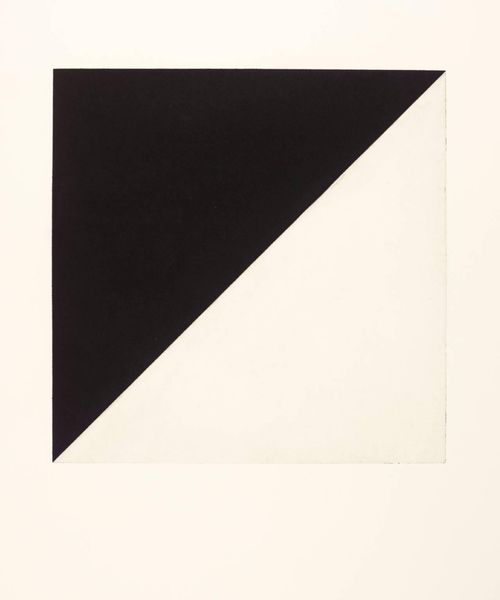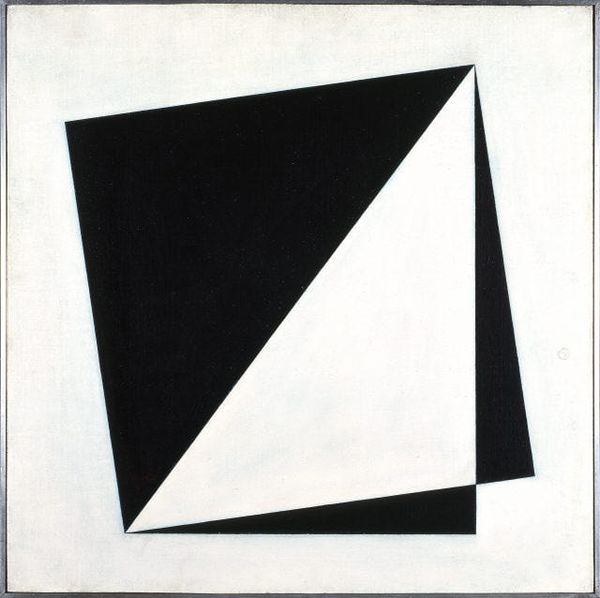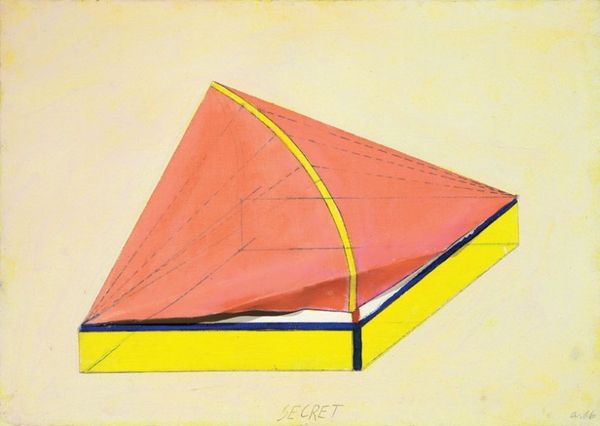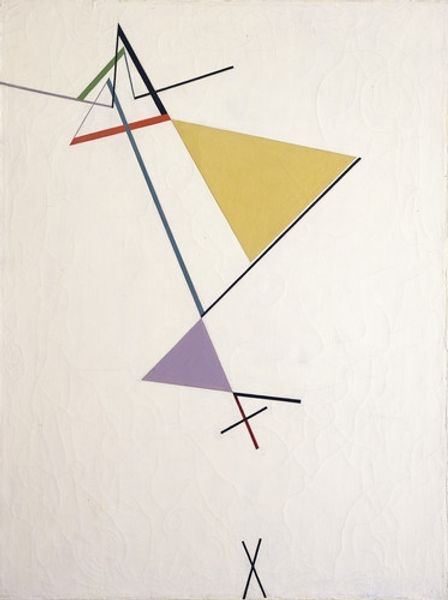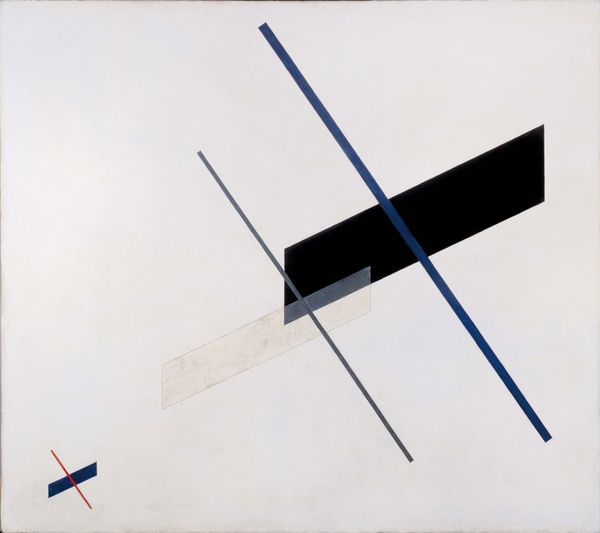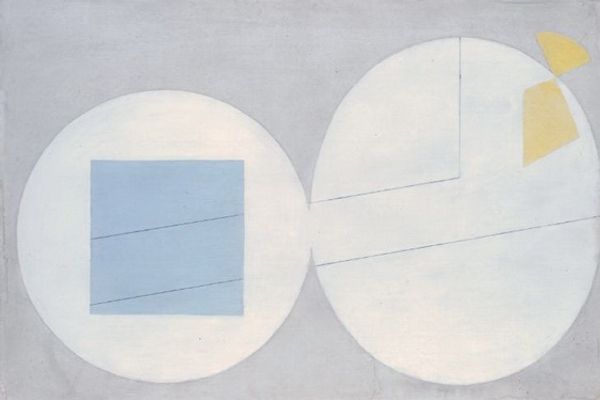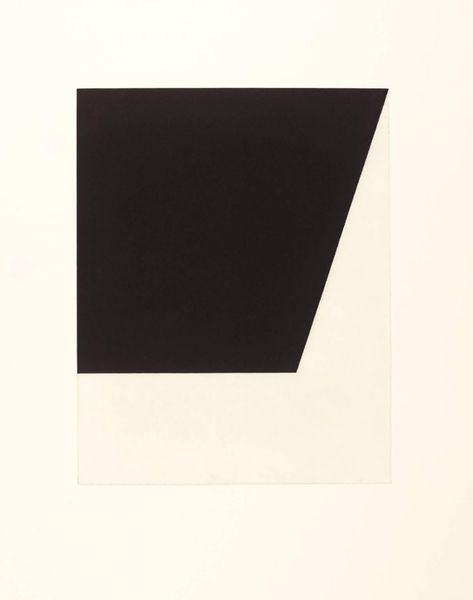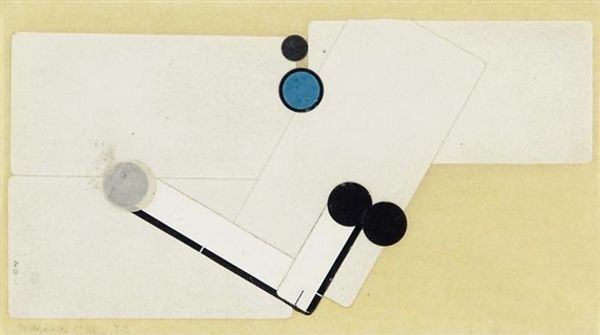
acrylic-paint
#
acrylic
#
circle
#
constructivism
#
acrylic-paint
#
tonal
#
geometric
#
abstraction
#
line
#
bauhaus
Copyright: Public domain
Curator: Looking at this piece, I feel an immediate sense of... spaciousness. It’s like peering into some quiet corner of the universe, a sort of geometric haiku. Editor: Indeed! We're standing before László Moholy-Nagy's "AXL II," painted in 1927. The work is done in acrylic paint. It exemplifies his commitment to Bauhaus principles, where functionalism, design and modernism meet, where art strives toward simplicity. Curator: Bauhaus! Ah, yes, the art world's minimalist phase! I mean, look at it, floating black circle and intersecting lines on a largely blank canvas—it feels so elemental, almost like a blueprint for… something. Maybe for living itself. Editor: Exactly. The painting strives toward the essential, simplifying reality into a balanced equation, echoing industrial design, rejecting bourgeois artistic conventions by using abstract geometry to reach pure forms. Moholy-Nagy used geometry not merely for design's sake but to explore utopian social structures that rejected traditional models. Curator: I appreciate this "utopian vision". Still, I find the austerity quite unnerving, an almost chilling lack of human touch! No brushstrokes to reassure us of the artist's presence, so perfectly rendered and devoid of flaws. Was it even made by human hands? Editor: Absolutely, but the human hand striving for machine-like perfection, rejecting traditional humanism. As part of the Bauhaus movement, Moholy-Nagy was fascinated with modern technology. As such, "AXL II" reflects both his and his contemporaries' concerns about integrating technology into culture. Curator: Okay, point taken. But, standing here now, I see the impact that kind of thinking had on everything! Minimalist architecture, graphic design—all these sleek, spare aesthetics owe something to the brave new world these artists were imagining, no? Editor: Precisely. And, let's consider that Moholy-Nagy believed abstract art could be universally understood. "AXL II," for him, could thus be a communication piece, an art that cuts through national or class divides, by embodying pure feeling and form. Curator: You’ve nudged me. I am struck now how very radical an idea "AXL II" would've been at that time—to create an art seemingly untethered from any conventional narrative. It requires work, this piece, to appreciate—it's more a quiet contemplation. Editor: Yes, a work of art demanding of us not passive viewing, but a mental dialogue, inviting one to see the bare bones, to understand something new and universal about structure itself. And perhaps, ultimately, to design a better reality.
Comments
No comments
Be the first to comment and join the conversation on the ultimate creative platform.
